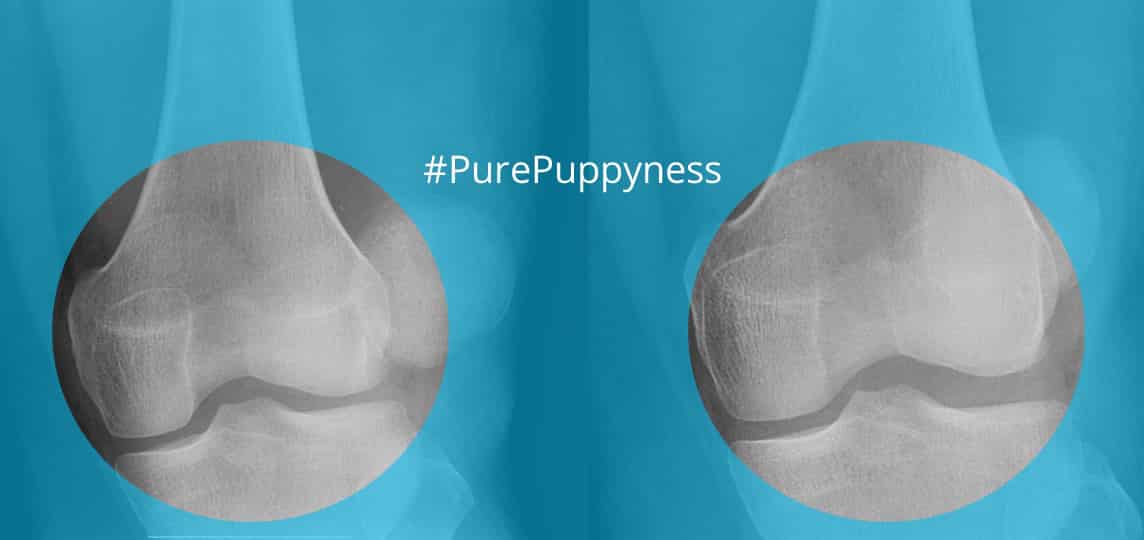Patellar Luxation
Is your dog bow-legged? Does he or she seem lame in the hind-legs, “skipping” slightly before walking normally again? Your dog may be suffering from a dislocated or floating kneecap. This disorder is more properly known as Patellar Luxation.
What is Patellar Luxation?
A dog’s skeleton is more similar to a human’s than you might think. They have the same bones in their hind-legs as we do in our legs: femur, tibia, fibula, and so on. Dogs even have a knee (sometimes called the stifle), and a kneecap, which is also called the patella.
The Patella is a small bone that slides in the lower groove of the femur (thigh bone) and is attached to the top of the tibia (a long bone beneath the knee). There are several ligaments that hold the patella in place. The patella normally slides up and down in the area between the femur and tibia, forming part of the knee joint.
In a dog with Patellar Luxation, the patella luxates (dislocates) out of its normal position when the knee is flexed (bent). The patella may shift laterally (away from the dog’s midline) or medially (towards the midline of the dog). As a result, the dog won’t be able to properly extend the knee joint, causing lameness.
Causes
Patellar luxation is a hereditary condition. Selective breeding for bow-legged dogs increases the chances of a dog developing the condition. Toy breeds are very susceptible to this condition, including the followning breeds: Yorkshire Terrier, Pomeranian, Pekingese, Chihuahua, and Boston Terrier. With hereditary patellar luxation, the bones and muscles grow abnormally as the dog grows up, causing lameness. The condition can also be the result of traumatic injuries.
Symptoms
A dog suffering from Patellar luxation will have a strange “skipping” pace, where the dog limps for a few steps then continues moving normally. Not all dogs with the condition will show this symptom. Some dogs will limp continuously, and other walk stiffly without fully extending their knee joints.
Diagnosis
To diagnosis Patellar luxation, the vet will palpate the area, which involves pressing the kneecap and surrounding area to feel for abnormalities. An x-ray or other diagnostic imagining procedures, such as a CAT scan, may be needed to confirm the diagnosis.
Treatment
The treatment for Patellar luxation depends on how serious it is. With Grade I luxation, the mildest form, surgery is not usually required. With Grade II to Grade IV luxation, surgery may be necessary. There are different methods for treating the condition, such as reconstructing the soft tissues in the area, or reshaping parts of the bone: for example, deepening the groove in the femur.
If the dog doesn’t need surgery, then the vet may prescribe painkillers, or recommend physiotherapy or special exercises to keep your dog comfortable. Your dog may need to go on a special diet to keep him at a healthy weight and to avoid putting stress on the joint.
Prevention
There’s no easy way to prevent Patellar luxation. Since this is often a genetic problem, it is really and truly up to dog breeders to breed responsibly. Dogs with genetic Patellar luxation should simply not be bred.
If your dog is at risk from Patellar luxation, make sure to keep him or her at a healthy weight, with daily exercise to help keep them fit. Do not overwork your dog at a young age, as this can cause joint problems.






















